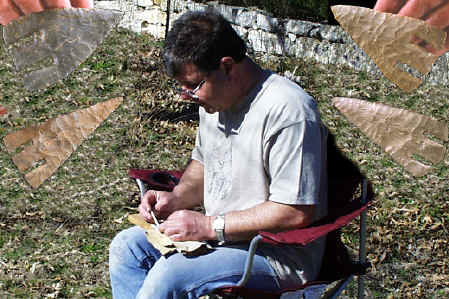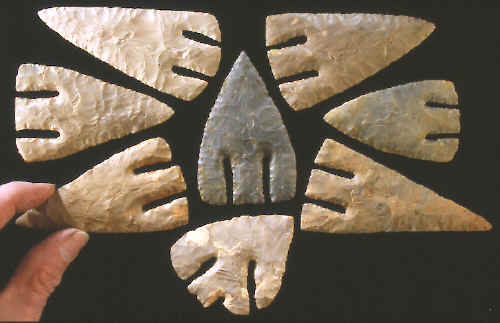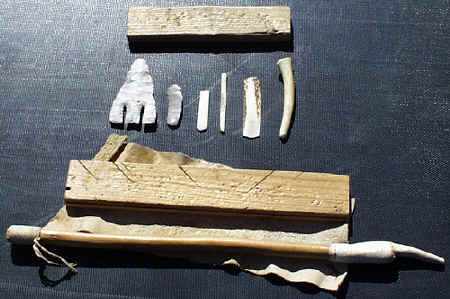|
|
|
|
|
"In 1981 Bill Carroll and a friend showed me the first Andice/Bell/Calf Creek artifacts that I had ever seen----From that time on I was hooked on notching"---2003, Carey Weber
ANDICE
POINTS Carey Weber was born in Fredericksburg, Texas in 1953. He's been interested in Stone Age artifacts for about as long as he can remember. By the third grade he had assembled a small collection of artifacts which he took to school on Earth Science Day---and never saw them again! The loss of the artifacts didn't stop him though. He says "the loss of those stone objects instilled in me a wonder of how they were made." |
|
|
|
|
Carey says "the rumor rampant on the street was that Native Americans dropped cold water on hot flint to chip them out." He was lucky though, his neighbor had a ranch with a very dense distribution of archaeological sites that he was able to collect on. The neighbor also had a father who could flint-knap and in fact "fixed them (points) all the time." Carey's first sight of someone flintknapping was this man "re-tipping an Ensor point by pressure flaking with a screw driver on a 2" X 4" pine lap board. |
|
| CONTINUE ON TO PAGE TWO | |
|
"REFERENCES"
1985,
"Selected Preforms, Points, and Knives of the North American Indians,
Vol. I," Calf Creek, by Greg Perino, p.62. |
|



